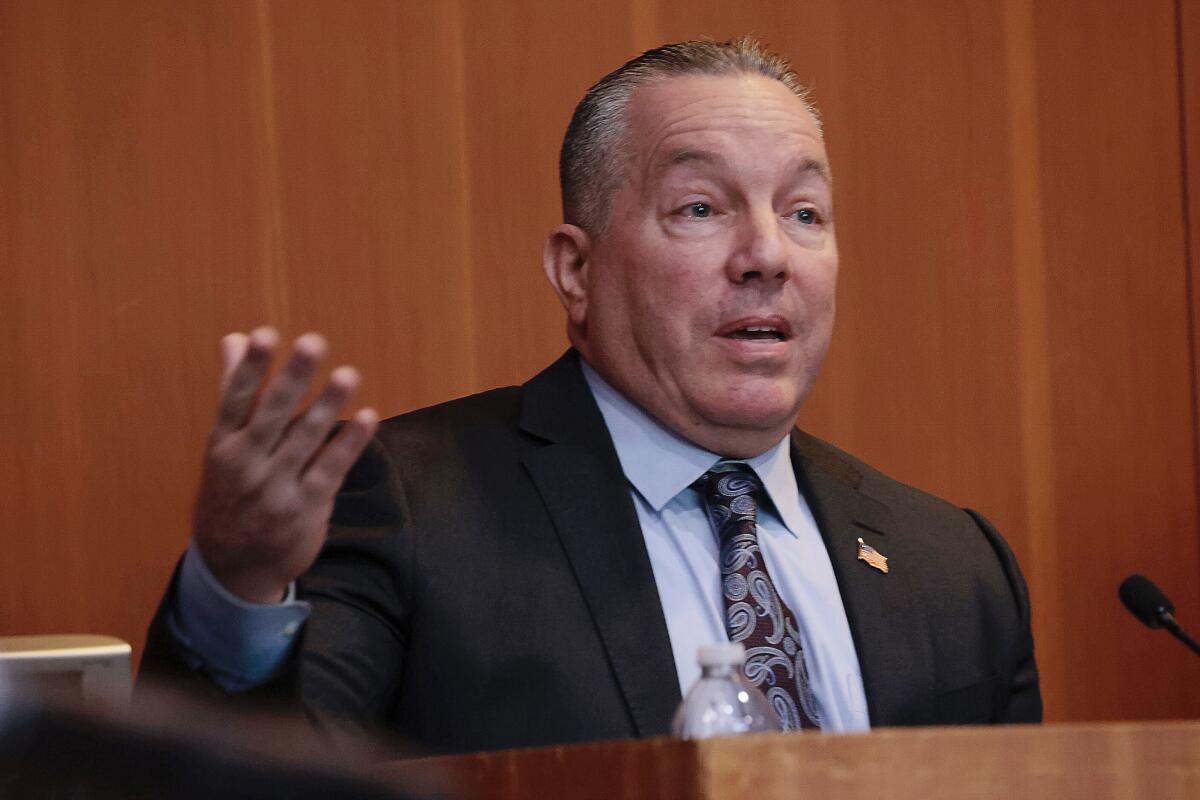JOHANNESBURG (Reuters) – In the South African township where Luke Fleurs grew up, some friends joined gangs before they reached high school age, but Fleurs found another path: he was so brilliant at soccer that he rose to be a professional player at South Africa’s top club.
Fleurs’ success story ended abruptly last month when he was killed at a Johannesburg petrol station by someone stealing his car.
The 24-year-old’s murder not only sparked public grief due to his profile as a Kaizer Chiefs defender but also highlighted South Africa’s crime problem. South Africa has one of the highest murder rates in the world, with an average of 75 a day.
Voter frustration over the government’s inability to curb rising crime rates is one of the reasons the ruling African National Congress is expected to lose its majority in a May 29 election, after 30 years in power.
Crime was part of the backdrop of Fleurs’ upbringing in Mitchell’s Plain, a suburb of Cape Town where the apartheid-era government relocated mixed-race families.
“We gave our blessing for him to move to Johannesburg to escape the violence and gangs back home, only (for him) to meet his demise at the peak of his promising football career,” his father Theo Fleurs told Reuters in an interview.
He said Luke was a sociable child, whose mother earned the nickname “Magic Mom” for feeding all the friends he brought home for dinner.
“It was in these groups of friends that many lost their path and went to join local gangs as early as 12 years old,” said Theo Fleurs, a high school janitor and soccer coach, adding that many local boys idolised the gangster lifestyle.
Luke’s passion for sports kept him out of trouble, but by young adulthood he had one good friend who was in prison for murder and another killed in a shooting.
When he heard about the shooting, he had already moved to Johannesburg. His reaction to the news was to vow to do even better so he could be an inspiration to his friends back home, his father said.
GETTING AWAY WITH MURDER
At 45 per 100,000 people in 2022/23, South Africa’s murder rate was the highest in 20 years, police figures show, roughly equivalent to Ecuador’s and higher than that of Honduras, a country plagued by extreme gang violence.
The murder rate in the United States, one of the highest in the developed world, was six per 100,000 in 2022, according to government data.
High levels of poverty, unemployment and inequality have created fertile ground for crime to take root in South Africa, compounded by the proliferation of organised criminal groups and a flood of illegal weapons in recent years, analysts said.
The state’s approach, largely focused on recruiting more police, has changed little since the 1990s, said David Bruce, a consultant on policing for the South Africa-based Institute for Security Studies.
“The South African policing system needs to adapt to a new world,” said Bruce.
The ANC’s election manifesto says it will modernise policing, develop capabilities to combat cybercrime and gang violence, and implement a data-driven approach, among other measures.
The proportion of murder cases being solved has been declining. In 2022/23, there were 27,494 murders and 2,982 convictions, according to government figures.
“Basically, one in 10 murders is ever solved by the police,” said Ziyanda Stuurman, a senior analyst at Eurasia Group who wrote a book about policing in South Africa.
“There’s the general belief that you can get away with murdering somebody and you’re never going to get caught.”
Six men have been charged with Luke Fleurs’ murder after police tracked his stolen car to Soweto, South Africa’s largest township. They have indicated they will plead not guilty.
Most of the suspects, who are in their 20s and 30s, grew up in Soweto and are unemployed. At a recent bail hearing, they sat nervously on the bench, their families gathered behind them.
“When I saw them I didn’t feel any hate towards them, the perpetrators, just sadness came over me for what they have done to my son and to South Africa,” said Theo Fleurs.
“I tried for them to just look at me, I really tried, I wanted them to feel what I feel,” he said. None of them met his gaze.
(Additional reporting by Esa Alexander in Cape Town and Sfundo Parakozov in Johannesburg; Writing by Nellie Peyton; Editing by Estelle Shirbon and Emelia Sithole-Matarise)
